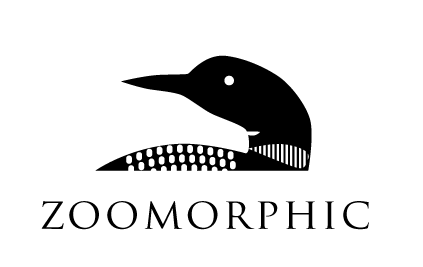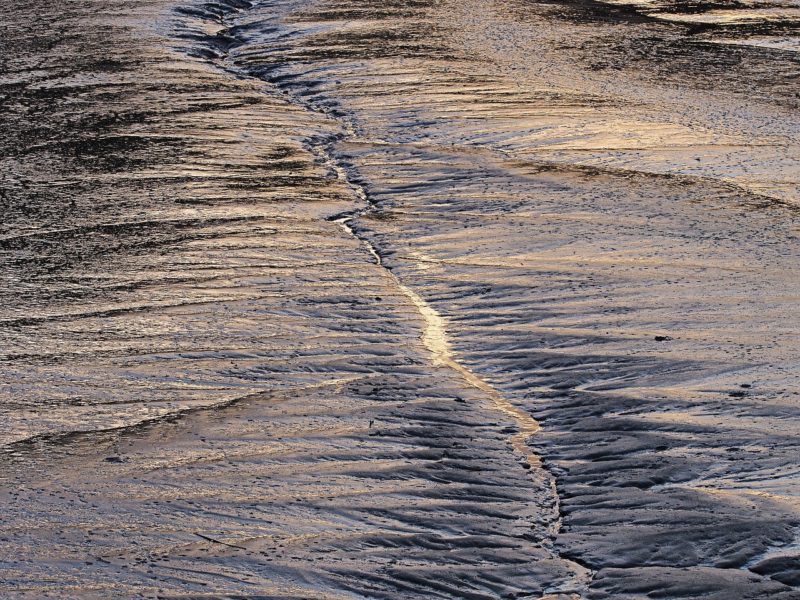by Matt Gaw
We head out straight, the canoe’s nose pointing towards the river’s first bend. The wind, the first taste of a storm that is forecast to hit tomorrow, funnels down the seaward stretch of the Alde and forces lumps of water under the Pipe. They hit hard, like speed bumps.
The Alde is comparatively short, with less than 20 miles separating its source in Laxfield (close to where Suffolk’s Blyth also bubbles into life) and its mouth near Orford, where it becomes known as the Ore. Yet in some ways it feels like the biggest river we have explored so far. As we paddle into the winter sun, the whole horizon shimmers. The water, the acres of mud, the beaches and soggy spits all gleam, all ripple with light. It’s hard to tell where the river stops and the land begins.
With the tide still not completely with us we decide to take a break and allow the water to gather. We get the Pipe up to what James calls ‘ramming speed’ and beach ourselves on a shingle spit that spears out into the water. But these are no stones. It is a mass of shellfish and crab, a great, grey beach of shells, clam and carapace; a huge graveyard of mussels, spattered with barnacles and mud. It’s impossible to stand in any one place for long without sinking down to the ankles, so we drink our tea on the move, taking crunching steps round tiny blue lagoons of trapped water. James, stomping theatrically over a pile of broken shell, says it reminds him of a grisly scene from Terminator 2 in which robotic feet smash through the burnt remains of human skulls.
‘It’s like,’ he says, waving a disembodied crab claw at me, ‘we’re at the end of the world.’ I know what he means; there is a sense of loneliness here, that we’ve escaped to a place where both land and time are running out.
We collect shells to avoid thinking about the bone-chilling cold, arranging them on the nose of the Pipe as the water begins to rise around us, the shallow pools widening into each other. A gull, disturbed by our presence, reluctantly throws itself into the wind. The shell spit is now less solid than ever, a wavering hazy line between land and water. Within minutes we can actually see the tide. While the river flows seaward, the current piles against it and over it, leaving the surface of the water taut, occasionally breaking into an angry swirl, or rising into sharp spikes like the black dorsal fins of hundreds of fish jostling to get upstream. It is also a clear sign for us to get going. I clamber back in and James pushes off, jumping onto the Pipe as she glides away from the mussel island and back into the river.
There are plenty of boats here, but no one to sail them. We try to guess the names painted on their sides before we reach their mooring buoys, disappointed that close up ‘Witches Spank’ becomes ‘Vital Spark’, the ‘Onion’ the slightly more cosmic ‘Orion’. I think of my five-year-old daughter’s announcement a couple of months ago while taking a river taxi in Beccles: ‘If I had a boat I’d call it the Idi-yacht.’
As the boats thin out, the number of birds increases and we find ourselves relying on them to navigate the narrow channels through the mud: the throngs of feeding waders mark the waterline, galloping away in startled herds when the canoe gets too close.
Even with the tide’s help it takes more than an hour to reach Iken, but we couldn’t have asked for a better day. The sky is a cold blue, fading to milk at the edges; clear apart from a single vapour trail, stretched and pulled by the wind into a ragged backbone of fluffy vertebrae. There are clouds of a different sort too. Dunlin. Only visible when the sun hits their white chests and the underside of their whirring wings, they pulse and rush above the water. Their feathers glint like the flashing scales of silver fish with each dip and turn. We stop paddling to watch, but their murmuration finishes as quickly as it began, the birds dropping like beautiful pebbles onto a curve of mud near the right bank, rooting their bills in the mud.
Alde Mudflats stretch for almost three miles around the church that overlooks the estuary, emerging with each low tide. An Atlantis of nutritious, invertebrate-filled mud. Leased from the Crown Estate by Suffolk Wildlife Trust, it is a nature reserve, a refuge for a huge number of birds. In fact, I don’t think I’ve ever seen so many in one place. Curlew stilt-walk across the mud, their bills a needle-thin shoehorn of bone-hard keratin, prodding and searching. Others take off as we near, like feathered Concordes with skinny nose cones lowered. Further away there are avocet, oystercatchers, redshank and many others I cannot name. I feel a slight sense of frustration at not knowing them, at not being able to separate and identify the mass of whimpering, mournful cries that wobble out over the estuary.
But in some ways it doesn’t matter. Part of what I find amazing about experiencing nature are those moments of wild chaos, the pure clamour of life when nature and self are suddenly wrapped up together in one song. The boundlessness of the natural world doesn’t just surround me or impress me; it assimilates me, claims me as its own. The experience is often fleeting, but it is undeniably precious. Soul-nourishingly so. What’s more, I can feel it here on this estuary. For haunting seconds, in the thrum of beating wings, the creeping water and the power of the rushing tide, I become gloriously, precariously, part of it.
The tide is hurrying ahead of us now. We’re on a Nantucket sleigh ride powered by the great brown flukes of water rushing inland. The paddling is so easy that we shoot past the point where we planned to turn round, gliding on towards the reedlined banks that lead to Snape Maltings, which appears like a great ship ghosting above the water.
Matt Gaw is a writer, journalist and naturalist who lives in Bury St Edmunds. His work has been published in the Guardian, the Telegraph and the Times. He works with the Suffolk Wildlife Trust, edits Suffolk Wildlife and writes a monthly country diary for the Suffolk Magazine. The Pull of the River is his first book. See also www.MattGaw.com.

